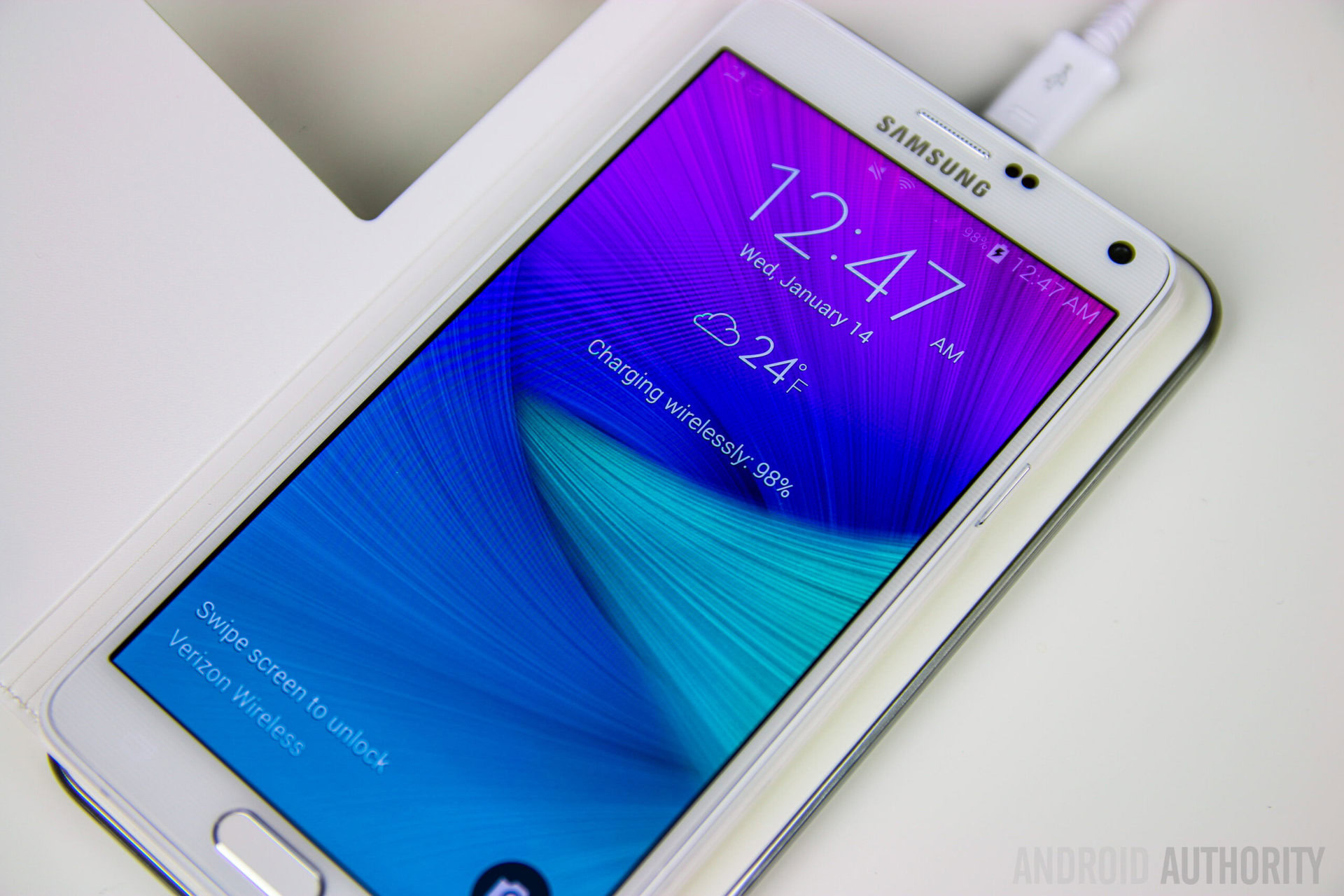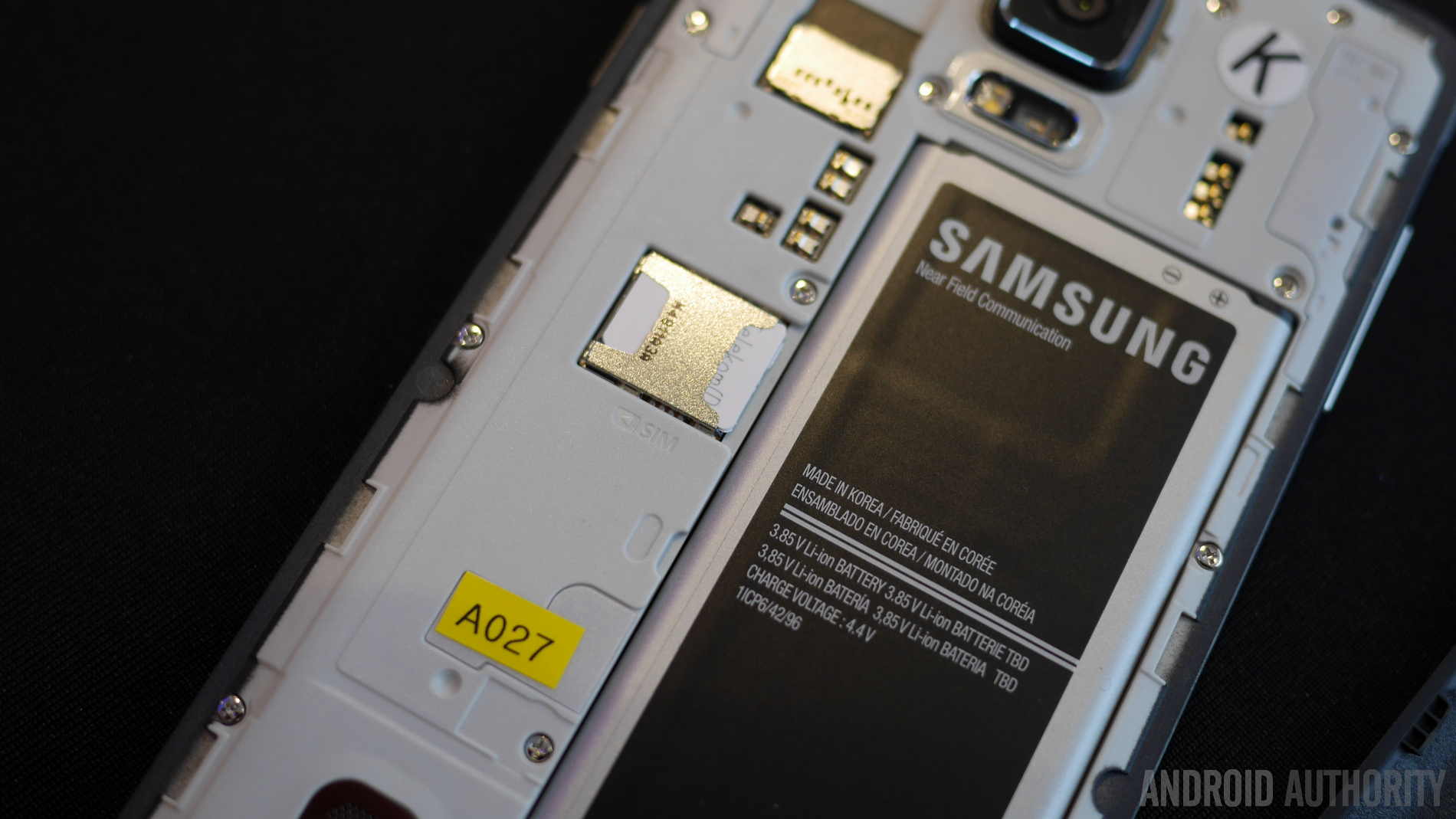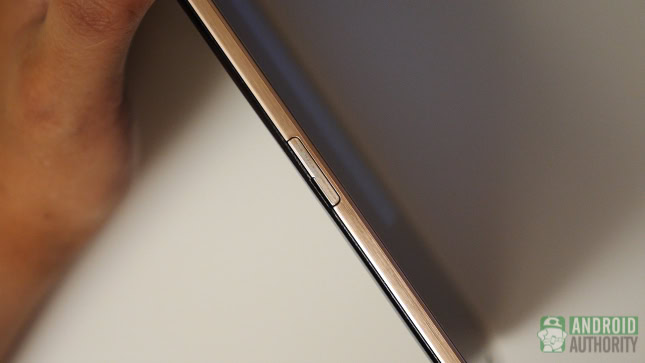Affiliate links on Android Authority may earn us a commission. Learn more.
Samsung Galaxy Note 5: how important are microSD and removable battery for the device's success?
July 15, 2015

Disclaimer: This piece is based largely on speculation as to what the Galaxy Note 5 is, and isn’t. We are approaching this from a purely hardware perspective for the sake of argument, as nothing is yet known about the TouchWiz alterations that will inevitably be made from the Note 4 to this new flagship. Please remember that Samsung has neither confirmed nor denied any of these spec-related details and thus they should be approached with skepticism.
With all that out of the way, let’s jump in and discuss the Note 5, shall we?
There is a rising tension in the air and all those who have stayed with Samsung know it. This year has seen the departure of two signature features form the Galaxy product line, a removable battery and support for expandable storage via microSD. These features were arguably a large part of the reason Samsung initially found such a big market. The problem is seemingly going to get even worse if rumors hold true and the Galaxy Note 5 follows in the footsteps of its mainstream mentor.
Indeed there is a twinge of irony given that tech pundits the world over have harshly criticized the Korean conglomerate’s use of plastic, despite the fact that mobile devices have been using it for decades now. Suddenly it became de rigueur to shun it. Still, as the de-facto mainstream device, a product like the S6 can get away with trying mostly anything and people will still buy it. The Note series, on the other hand, has gradually graduated into the power user’s weapon of choice, and it is here that Samsung may face new trials and tribulations if it the larger flagship ends up following suit and drops the removable back and microSD card slot.
The Note 5: What we “know”

Let’s start by talking about what we know about the device. Samsung, as with most every other OEM, is tight-lipped on the details of its future products, and that means officially we know nothing about the Note 5. That said, there has been a steady stream of leaks that have given us a rather good idea of what to expect. While a full list of what to expect can be found in our Note 5 rumor roundup post, we’ll do our best to summarize a few of the important things we (think we) know about the device.
The Galaxy Note 5 will be released as SM-N920 and will have a QHD SAMOLED flat display as with the models before if (i.e. not the Note Edge). It will have a glass back just like the Galaxy S6. It will use the 64-bit Octa-core Exynos 7422 all-in-one chipset which includes the GPU, RAM, storage, and LTE modem on-board. It will likely not have a 4K panel. It will have 4GB of RAM.
Other information, also unconfirmed, includes the same fingerprint scanning home button as found in the Galaxy S6, no removable battery, and no microSD card support. It will also, arguably, make use of an ejectable S-Pen, a design that Samsung patented last month.
Given that Samsung is clearly seeking to make 2015 all about “premium” flagships, it really shouldn’t come as a surprise that the Note 5 is seemingly going to feature a glass back. It is a flagship after all, and it would actually be quite strange for Samsung to make such a case for the new design elements and then take a major step back and go with a plastic rear. While Forbes argued that it might be possible to make a glass back removable, the plausibility of such an idea seems quite spotty at best.
Battling the battery-bashers

Given that the Galaxy Note series has been the purveyor of the phablet form factor, we know it’s used for heavy gaming sessions, business productivity, and hardcore media consumption. Indeed it is the very existence of this type of product that has led to a decline in the tablet market, a market that almost never contains a user-replaceable battery. Samsung has always been about swappable batteries, and so too, in turn, has the Note series. Some more outspoken users are upset at the idea of this core feature possibly being removed, and rightly so.
With that said, even with a removable battery, the functionality isn’t a done deal by any means. The process has always involved the purchasing of an extra battery, and (possibly) a charging pod for it so as to make sure it’s full of juice when you need it. (Interestingly enough the Korean variants had, up until the Note 4, always included a spare battery and the battery charging cradle free of charge.) This of course translates to coughing up extra cash.
Now that Samsung has decided to make full use of wireless charging (two different standards supported no less) it’s easier than ever to simply pop the device onto a wireless charger and watch the magic happen. Some of these chargers can be had for around the same cost as the extra battery/cradle combo, and thus technically speaking it really shouldn’t matter if the end result is the same. Is pulling off the battery door that much more fun? Likewise, now that Qualcomm’s Quick Charge 2.0 technology is included, it’s easier than ever to top-up the device when around an AC outlet.
Ultimately the question revolving the battery becomes a very simple one: would you be willing to sacrifice a more premium, thinner design for the sole benefit of having a user-replaceable battery, especially when the alternatives suggested above basically cover the very same thing?
Morbid about the microSD

Whereas the battery issue is, in theory more forgivable, for many the lack of expandable storage isn’t. Again this is something that doesn’t require too much analysis to understand: not everyone has unlimited data, and thus streaming everything is just not a viable option. Likewise, if you have 100GB of movies, it’s easy to simply pop them onto a few microSD cards and carry them with you be it on a long car ride, an airplane, or even at lunch. Samsung can be accused -and rightly so- of encouraging this behavior for the simple fact that its done so from the beginning. Make no mistake, this isn’t Apple (or Google) we’re talking about here, which has always relied on spending more to expand the always-finite amount of storage. No, Samsung has at times made a marketing USP out of the inclusion of microSD support.
Samsung can be accused -and rightly so- of encouraging this behavior for the simple fact that its done so from the beginning.
While it’s expected the Galaxy Note 5 will come in three size variants (32, 64, and 128GB), that still doesn’t solve the problem for everyone. For starters, some regions (like Japan for example) never got the 128GB Galaxy S6 to begin with, and thus the size might not be a possibility at all. For others, there is a cost-factor in that the extra internal storage comes at a higher initial purchase price whereas microSD can be had for almost nothing these days.
From a design perspective, there is technically no reason Samsung can’t include microSD, as it certainly has on the Galaxy A8, which is made entirely of metal, just as the other installments in the A-series smartphones. Heck, there was technically no reason the S6 and S6 Edge couldn’t have had support either, given that it would have just required adding an extra tray to the frame, or -as is the case with the Dual-SIM S6 variants- an extra wide one.
Salty about storage

SamMobile has raised the idea, stemming from a user comment, that the problem lies in the internal storage option Samsung has chosen for the phone. “SD cards and the eMMC 5.0 solution used on other flagships are able to use the same memory controller (the controller is what handles data transfer and communication with things like the processor), making it easier for them to exist in the same device. UFS 2.0, on the other hand, uses a new type of memory controller, and Samsung will have to find ways to interface the new controller with the one used on SD cards to be able to make them work together without affecting overall performance.”
What this means is that it’s seemingly impossible for the Note 5 to include microSD support from a technical standpoint. This could very well be the same reason the feature was dropped from the Galaxy S6 Active given that it was widely expected – based on leaks – that the device was going to include support prior to the official announcement. This also raises another issue however, namely how it is that rumors are claiming the upcoming Galaxy Tab S2 will include microSD support? Assuming Samsung includes UFS 2.0 with it then, based on the above explanation, it wouldn’t work. So will Samsung release the Tab S2 with standard eMMC storage? If so, then couldn’t it technically do the same with the Note 5? It’s also worth pointing out that there is little to stop Samsung from making a workaround for this purported problem, thus why isn’t it?
Double Dosage
Some of the more outspoken critics of Samsung’s new design ethos have suggested the panacea for this perceived malady is to simply produce two versions of flagship products: one that conforms to the premium standards, and one that adheres to the design language of old. In theory this is a solid, sound idea that would solve the problem entirely. At the same time, there are a few fundamental problems to consider in such a solution:
1. Demand: Look no further than Galaxy S6 sales performance to understand just what the danger is of making two similar models with slightly different hardware. Given the unsurprisingly average sales numbers for the Galaxy Note Edge, it would make sense to have tapered expectations about the performance of the S6 Edge, all the more so given it doesn’t have anywhere near the level of usability that its Note progenitor offered. Lo-and-behold the S6 Edge is a sweeping success despite costing about $100 more than the standard variant.
If Samsung makes both a “new type” and “old type” Note 5, who can really say which will be the winner? If all bets are on the unibody variant and it doesn’t sell, then that’s a lot of potential write-down and unsold inventory to deal with. On the other hand, if the old-type is projected as the winner and it doesn’t move major mountains, suddenly there is a major production shortage of the new-type. Whereas the demand used to wait for the supply to return, these days there are so many alternative products out there, one need not wait at all.
Confusion is one of the worst possible factors when it comes to making a purchase choice, and by making two products Samsung would thereby be actively promoting it.
2. Costs: Directly related to the demand issue, making two separate phones would entail making two totally separate devices. Costs are involved, and all the more so when you consider that the change in design might result in totally different circuit boards, components, and parts being needed to make both variants. This would be lesser of an issue were the plastic version a “Neo” of sorts, but if it must have the same exact specs as the premium glass variant, then costs will be higher.
3. Specs: If Samsung were to make a plastic variant of the Note 5, then it would quite feasibly be of a larger form factor than the unibody glass. As such, this would create a need to alter the specs. Perhaps give it a larger battery, perhaps remove a spring-loaded S-Pen, perhaps make it waterproof, etc. At the end of the day, this does nothing more than create more confusion for customers: hardcore users will be torn between sacrificing features for a more premium design and the mainstream customer will be totally lost as to what the differences are; why one is better (or “worse”) than the other. Confusion is one of the worst possible factors when it comes to making a purchase choice, and by making two products Samsung is thereby actively promoting it.
4. Common Sense: As harsh as it sounds, many of the more vocal critics of Samsung’s 2015 flagship choices need to confront the idea that their needs may not be indicative of those of the general public. Gone are the days when the Galaxy Note is competing in a barren playing field. Literally everyone has a phablet out these days, even Google and Apple, two companies one might never have expected would bring such a thing to market. Sure the Note series has its signature S-Pen, but how many people actually make extensive use of it? Samsung is now dealing with a very crowded ball park, and the only way to truly make the next home run is to produce the best possible player. Of course some will argue it’s more of a strikeout, but then again so too have critics been bashing the plastic usage for years: no one will ever be truly happy.
The other side:
Plausible Undeniably: While there are several reasons it might be illogical for Samsung to create two separate variants of its flagship devices, let us not forget that it already does this. One need look no further than the Galaxy S6 Active, or the entire, original Galaxy S line in the USA. Carriers can make demands, and their requests invariably come with some benefits for the OEMs themselves. If Samsung were to determine which markets specifically were more likely to want a removable battery and microSD support, it could work with carriers to do just that. Alternatively the carriers themselves could order a custom job from Samsung.
Preparing for the worst (or the best)

As we said in the beginning, nothing is certain about the Galaxy Note 5, at least not yet. We have a lot of theories about what it might be, some convictions about what it won’t, and some ideas about how the market will receive it. Until Samsung itself formally announces the product (or we at least get some hands-on leaks) the best thing to do is just sit back and relax. Remember why you like the product to begin with: the fantastic HD SAMOLED display, the large form factor, (perhaps) the inclusion of TouchWiz, the high specs…take all that in and ask yourself just how much a swappable battery and microSD really matter to you, if they really do at all.